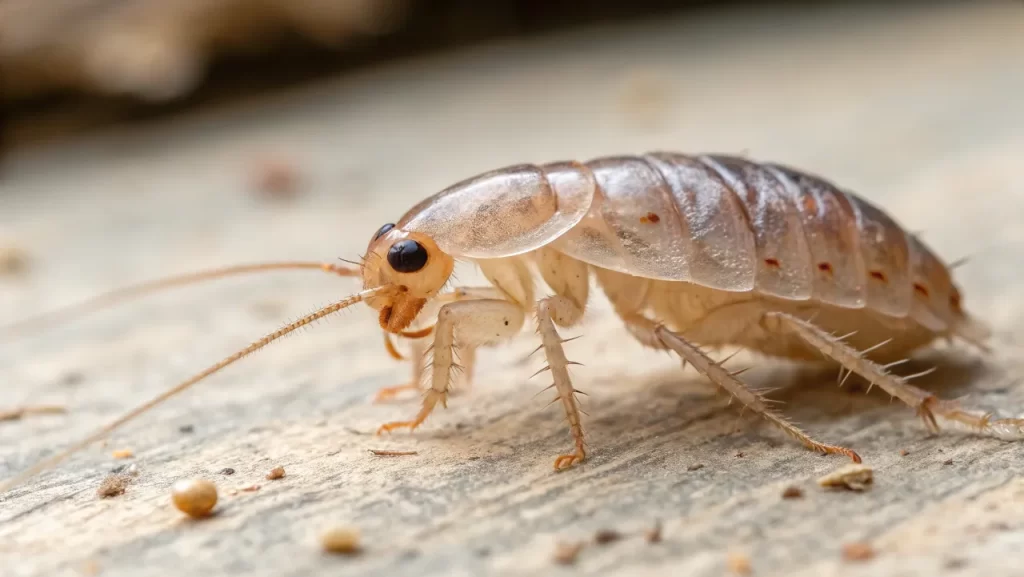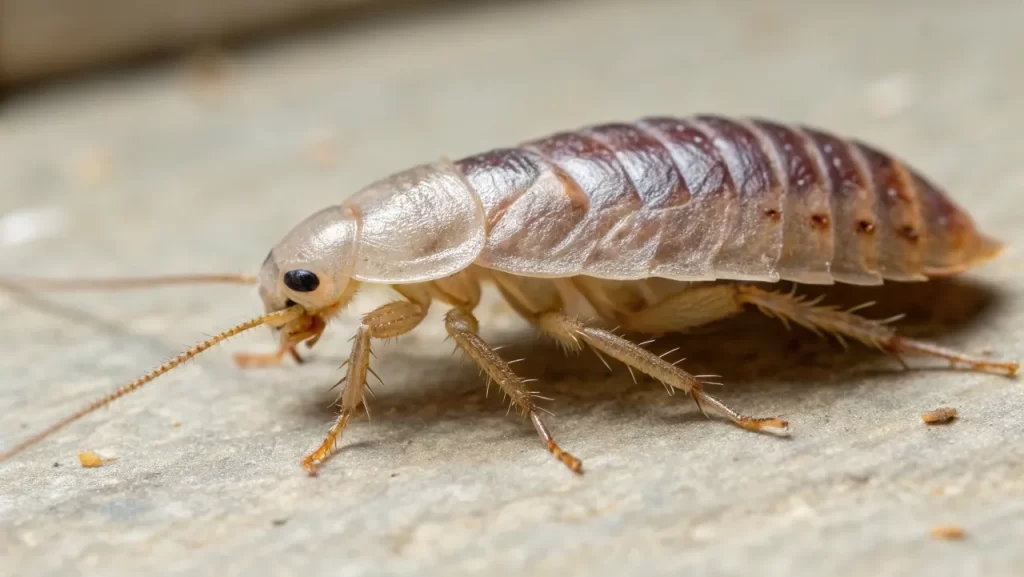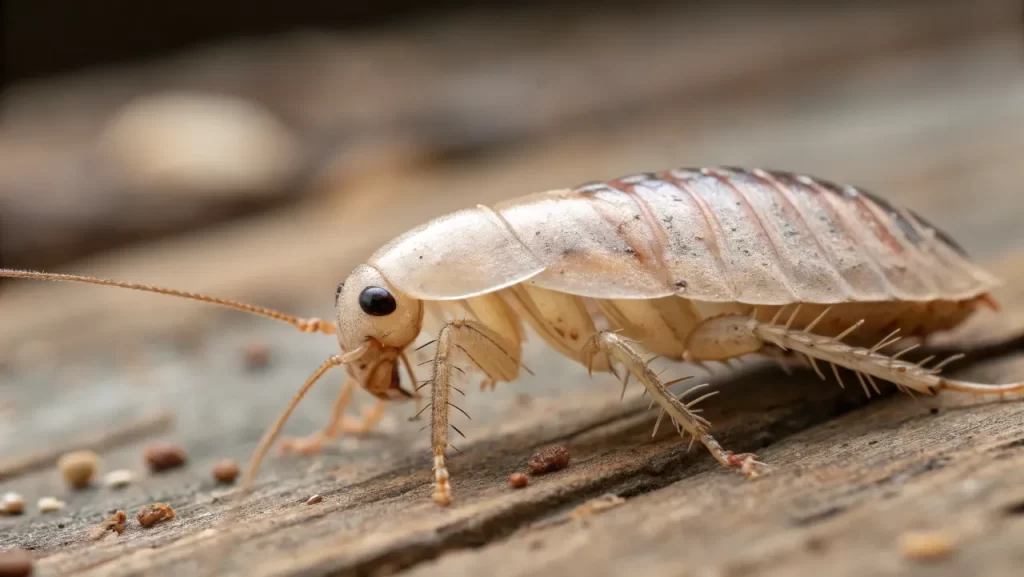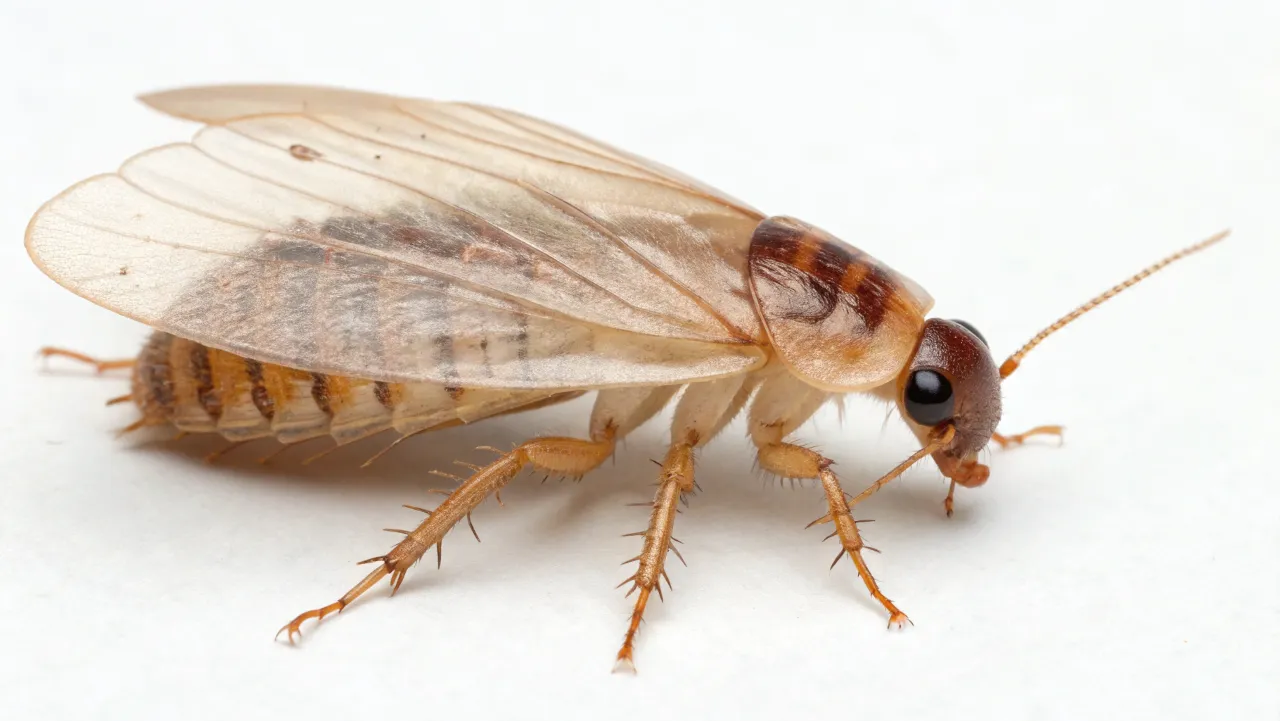Table of Contents
If you’ve ever spotted a baby cockroach scurrying across your floor, you probably know that it’s a sign of something much larger lurking behind the scenes.
These tiny creatures, also known as cockroach nymphs, are in the immature stage of a cockroach’s life cycle. Baby cockroaches indicate that adult cockroaches are present in your home.
Likely breeding and multiplying. In this article, we’ll explore everything you need to know about baby cockroaches—what they look like, where to find them, and why they pose a significant concern for homeowners.
What is a Baby Cockroach?
A baby cockroach, or nymph, is the early stage of a cockroach’s development. These pests undergo incomplete metamorphosis, meaning they resemble miniature adults, only lacking fully developed wings. They hatch from egg cases called oothecae, and as they grow, they molt several times before reaching adulthood. Each molt brings them closer to their final, fully grown form.
Baby cockroaches vary in size, color, and behavior depending on their species. Although they are generally smaller and lighter than adults, spotting them is often a sign that more are on the way—potentially turning into a larger infestation.
How to Identify a Baby Cockroach

The first clue to identifying a baby cockroach is its size. When newly hatched, nymphs are often no bigger than a grain of rice. As they grow, they range from a few millimeters to half an inch long, depending on the species.
Color is another important indicator. While they are typically light-colored at first, baby cockroaches darken over time. They start off translucent or pale white, turning to brown, tan, or even reddish-brown within a few hours of hatching.
Unlike adult cockroaches, baby cockroaches lack fully developed wings. They may have small wing pads, but these wings won’t fully develop until they mature. Their bodies are oval-shaped and hard-shelled, although they are soft immediately after molting.
Life Cycle of a Cockroach
Cockroaches have an interesting and fast-paced life cycle. After mating, female cockroaches deposit egg cases containing multiple eggs. These egg cases, called oothecae, can contain anywhere from 16 to 50 eggs, depending on the species. The eggs hatch into nymphs, and these baby cockroaches will go through several stages of growth.
As they grow, baby cockroaches molt, shedding their exoskeleton multiple times. Each of these stages is known as an “instar.” The time it takes for a baby cockroach to mature depends on environmental conditions such as temperature, humidity, and food availability. It can take anywhere from a few months to over a year for nymphs to reach adulthood.
Also Read: Can Chickens Eat Grapes? Exploring the Benefits and Risks
Common Species of Baby Cockroaches
There are several species of cockroaches, each with distinct features. Below are some of the most common types of baby cockroaches you may encounter:
- German Cockroach Nymphs: These are very small, about 1/8 inch when hatched. They are light brown and feature two dark parallel stripes running down their back. German cockroaches are fast breeders and the most common indoor species.
- American Cockroach Nymphs: Larger than German cockroaches, these nymphs are about 1/4 inch when hatched and reddish-brown with a pale, halo-shaped marking behind their head. As adults, they are one of the largest species.
- Oriental Cockroach Nymphs: These nymphs are dark brown to black, shiny, and oval-shaped. They prefer cool, damp environments and are commonly found in basements or bathrooms.
- Brown-Banded Cockroach Nymphs: Smaller than others, these nymphs have light brown bands running horizontally across their bodies. They thrive in warmer, drier environments and can be found throughout a home.
What Baby Cockroaches Mean for Your Home

Seeing a baby cockroach is a serious concern. Their presence typically signals a growing infestation. Since cockroaches breed quickly, finding nymphs suggests that adult cockroaches are already laying eggs nearby. A single egg case can contain dozens of eggs, and in no time, you could have a much larger problem on your hands.
Moreover, baby cockroaches don’t travel far from their hatching site, meaning there’s likely a nest close by. Common hiding places include behind appliances, inside cabinets, under sinks, and in cracks and crevices. This means a more significant infestation is likely within your home.
Health Risks Posed by Baby Cockroaches
While baby cockroaches don’t bite, they still carry a host of potential health risks. Like adult cockroaches, they scavenge through unsanitary areas like garbage and sewers. As they move, they pick up bacteria, viruses, and fungi in their bodies, which they can then transfer to your food, countertops, and kitchenware.
Baby cockroaches can spread several diseases, including Salmonella, E. coli, and gastroenteritis. They can also trigger allergies and exacerbate asthma symptoms due to the allergens they produce, such as their saliva, droppings, and shed exoskeletons.
How to Deal with Baby Cockroaches
If you spot a baby cockroach, it’s crucial to act quickly. Here’s what you can do to prevent the situation from escalating:
- Eliminate Water Sources: Since cockroaches need water to survive, check for leaks under sinks, around faucets, and in bathrooms. Fixing these can help reduce the chances of an infestation.
- Maintain Cleanliness: Cockroaches are attracted to food, so it’s essential to clean up crumbs, spills, and food waste regularly. Ensure that all food is stored in sealed containers.
- Seal Entry Points: Cockroaches can enter through small cracks in walls, baseboards, or pipes. Sealing these entry points can prevent further roaches from entering.
- Use Baits and Traps: Cockroach baits and traps can help catch adult cockroaches and nymphs, reducing the population. Gel baits are particularly effective because they attract cockroaches and kill them after consumption.
- Professional Pest Control: If the infestation is severe, it’s often best to call a professional pest control service. They have the tools and expertise to eliminate the problem quickly and effectively.
Can Baby Cockroaches Appear Grey?
Yes, it’s possible for baby cockroaches to appear grey, particularly right after they hatch or after molting. Newly hatched nymphs have soft, pale exoskeletons that can appear translucent or light grey. However, this phase is short-lived, and their bodies will darken to brown, tan, or black within a few hours.
What Attracts Cockroaches to Your Home?

What attracts cockroaches can help you prevent them from entering your home in the first place. Cockroaches are attracted to food, water, and shelter. Leftover food, dirty dishes, leaky faucets, and damp areas are all ideal conditions for cockroaches to thrive. If these resources are abundant, cockroaches will find a way into your home.
Natural Repellents for Cockroaches
Cockroaches dislike strong scents such as peppermint, citrus, and eucalyptus. You can use essential oils to repel them naturally. For example, a peppermint oil spray can be used around entry points, cracks, and crevices to keep cockroaches at bay.
Act Fast When You Spot Baby Cockroaches
Finding baby cockroaches in your home is a strong indicator of a cockroach infestation. Their presence means that adult cockroaches are already breeding nearby, and if left unchecked, the problem can quickly escalate.
It’s essential to take action by cleaning, sealing entry points, and using appropriate pest control measures to eradicate the infestation before it worsens. If you’re unsure how to tackle the issue, calling a professional pest control service is often the most effective way to handle a serious infestation.
By taking swift action, you can protect your home from the health risks and unhygienic conditions that come with cockroach infestations, keeping your living space safe and comfortable. More Information Contacts us.
FAQs
What do baby cockroaches look like?
Baby cockroaches, or nymphs, are small, pale when newly hatched, and darken to brown or black as they grow. They lack fully developed wings but have small wing pads.
Are baby cockroaches dangerous?
Yes, baby cockroaches carry bacteria and allergens, which can spread diseases like Salmonella and trigger asthma or allergies. Their presence signals a growing infestation.
How can I get rid of baby cockroaches?
To eliminate baby cockroaches, clean thoroughly, seal entry points, reduce water sources, and use cockroach baits. For severe infestations, contact a pest control professional.

